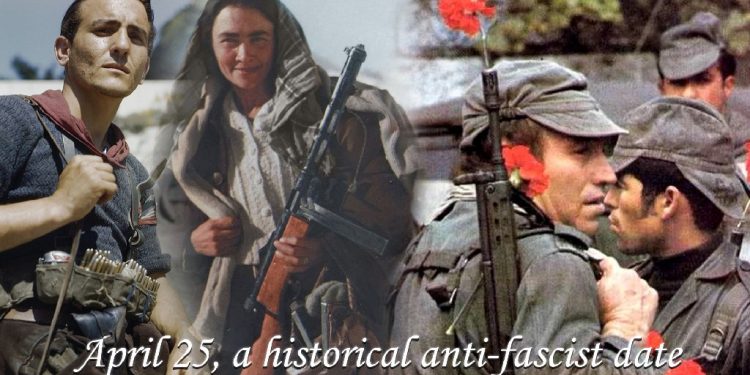NEWS CENTER – “Una mattina, mi son svegliato, o bella ciao, bella ciao, bella ciao, ciao, ciao! Una mattina mi son svegliato, e ho trovato l’invasooor” This is Bella ciao. But who sang? What is its meaning?
During World War II, thousands of Italians took up arms to liberate Italy from the fascists and Nazis, giving life to the Resistance. Since 1925, the founder of the fascist party, Benito Mussolini, had in fact established a dictatorship in Italy. The “duce” (as he would call himself a few years later) had imposed “very fascist laws”: in practice, no one could oppose the regime or even criticize Mussolini’s decisions.
In the north, however, Mussolini founded a state, the Italian Social Republic, to govern territories under German control. And it is here above all that many Italians decided to oppose this occupation by becoming partisans. They were common people: peasants, workers, students, parish priests, people of all kinds who organized themselves in the movement of Resistance to the “invaders” mentioned by Bella ciao , which became the symbolic chant of that fight.

The guerrillas hid in the mountains, mainly in the Apennines, while the women kept in touch, carrying messages and orders by bicycle or on foot. The guerrilla army of 300,000, known as the partisans, fought the Nazis and Italian fascists behind the front lines. Each had its own task, a battle name, and its own brigade. Armando Gasiani, 90, was one of them, captured and survived the Mauthausen concentration camp in Austria
“My brother and I decided that we would never kill anyone. We went to work for Todt, a German company, and at night, in addition to milk and bread, we took news of the enemies to the brigades that we collected during the day at the factory”
In 1945, in mid-April, guerrillas like Armando proclaimed a general insurrection and began a series of attacks to liberate the main cities. Three days after liberating Milan and Turin, the partisans captured and executed Benito Mussolini and his mistress, hanging them upside down in Milan’s Piazzale Loreto, marking the end of over 20 years of fascism.
38 years later, on the same date, a glorious 25th of April also became the symbol of Portugal’s anti-fascist and revolutionary struggle. It was at dawn on April 25, 1974 that the long fascist night that oppressed Portugal and the Portuguese under Salazar’s command for 48 years came to an end.
A dictatorship that subjected the people to poverty, misery, hunger and war to sustain the fortune and opulence of a minority, which condemned the country to illiteracy and backwardness. A criminal dictatorship that repressed, censored, arrested, tortured and murdered many of those who dared to oppose it, particularly communists.

The April Revolution returned freedom to the Portuguese people, independence, sovereignty and peace; paved the way for the construction of a democratic, developed and progressive Portugal. It guaranteed rights, asserted values, made dreams come true and brought hope and the strength to dream. To children, young people, women… “The people are the ones who give the most orders!”
The revolutionary struggle, once again demonstrates that its metaphysical value, its spirit of search for freedom and for a just and egalitarian life, does not reside only in the accomplished facts of history but that it carries its greatness down through the generations. Every revolutionary act has a historical value which becomes a beacon of hope for future generations. The 25th of April marks the victory of the popular struggle against fascist oppression’s of the past, at the same time that it demonstrates the way to the victory of the other anti-fascist struggles that are to come and are in development at this moment. The quest for a just world is more alive than ever.




